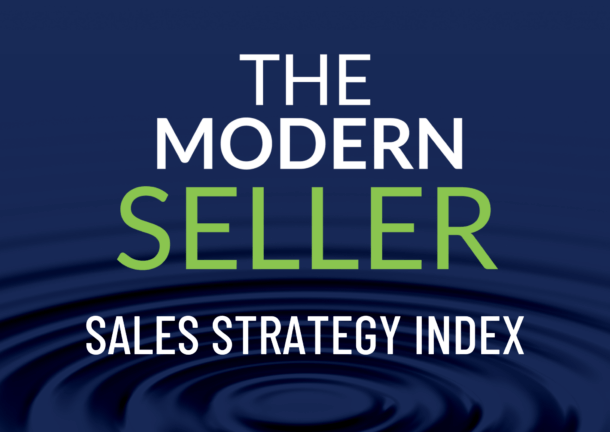A $1 billion sales lesson for leaders when designing and implementing sales strategy or sellers pursuing that bright shiny deal that will put the organization “on the map.”
***
A recent Wall Street Journal piece chronicled Spotify’s path to becoming the largest global player in the podcasting universe. They’ve invested more than $1 billion in creating a global podcasting brand, primarily by striking deals with big name celebrities. Spotify began in 2006 as a music streaming service and added podcasting to their product mix beginning in 2018. They have 220 million paid subscribers, and about 13% of its revenues come from advertising.
They have yet to turn a profit. On $1 billion investment.
There are some significant lessons in this story for organizational leaders designing selling strategy, for sales professionals considering territory strategy and opportunities, and for investors anticipating a return on their investment. (Read my post on sales growth metrics for investment events.)
8 Tips When Considering Your Sales Strategy and Growth Path
- Know your numbers, and not only the sales numbers. This includes top line revenue projections by product or service line, along with projected and actual profitability. This data can have many layers, including staff utilization in professional services, the breakeven of a SaaS or subscription model in technology, or inventory carrying costs in manufacturing and brick and mortar businesses. This can also include understanding how quickly you’re able to access cash as needed, plus the overall picture of income, liabilities, and equity.
- Know your critical sales metrics. Sales development metrics are valuable at both the strategic and tactical levels. Sales leaders who understand and track their top 5 critical metrics, and then ensure their sales teams are doing the same, will be well positioned to avoid unprofitable or otherwise unhealthy, unqualified sales opportunities. It’s incredibly valuable to ensure that sales teams are integrating this knowledge into their territory plans and CRM. (Ready my post on qualifying opportunities.)
- Keep a pulse on loss leaders compared to highly profitable products and services. Loss leaders are those products and services that lose money in early stages, but then increase in margin over time. They move to break even and then profitability, because either physical product costs decrease and sales price remains steady, or there are scalable efficiencies that take hold. Does the sales team have a clear picture of which offerings are loss leaders? Do they have a clear picture of how losses are offset, or how to improve profitability by combining lower-profit offerings with higher-profit offerings? What percentage of their sales territory is running on loss leaders versus profitable solutions?
- Analyze both the upside and the downside of landing that huge client. It’s exciting to pursue that whale sales opportunity, and there are many great reasons to consider it: top line revenue volume, brand recognition, quota attainment, and spinoff business growth. What many organizations don’t do is enough analysis of the downsides: opportunity cost (many of these deals can take a year or more to close), the cost of money to finance inventory, longer time to profitability, implementation challenges, and customer service challenges. It’s worthwhile to reflect on the costs of pursuing a market or a deal, allowing sales teams to make a fully informed decision. (Read my post on invisible costs bogging down your sales strategy.)
- Integrate your sales and marketing activities. Smart organizations integrate their sales and marketing strategies and activities. While those functions may have different leaders, those leaders are aligned on which marketing activities create the strongest return, and then how sales teams will optimize leads generated by marketing.
- Beware the bright shiny sales strategy. Have the fundamentals down and consistently implement them. There are no “get to quota quick” strategies that work in the long run. When you’re considering the activities available in creating selling strategy, focus on the fundamentals. Your key target markets and ideal customers. Outbound sales efforts and not only inbound lead generation efforts. Creating a healthy prospecting sales pipeline with sound prospecting activities. Getting in front of customers and not simply staying in the office. Paying attention to new business growth and customer retention. Asking for sales referrals. Having a sound sales process and sales methodology. I’m an advocate for trying new strategies and tactics – especially tools like social media and video technology — but nothing replaces strong fundamentals.
- If your company has a growth strategy, make sure you have a sales strategy. They’re not the same thing. I’ve worked with many clients who have a smart growth strategy, but what they lack is a sales-specific strategy. You can’t have one without the other. Sales strategy will help you achieve your growth strategy. It sets the path the sales organization will take on the way to accomplishing greater goals. Sales strategy is crucial for providing the sales organization with clarity on saying no to those markets and sales activities that don’t align with the company’s growth goals.
- Know your pivot points, so you can decisively and confidently make changes. No selling strategy or path is set in stone; there needs to be flexibility. There is too much ongoing change that can’t be ignored. There’s an excellent podcast on this topic from the Science of Success on avoiding FOBO, or Fear of a Better Option. Decisive leaders set a path and give themselves room to pivot when new information becomes available to them. It’s the decisiveness that matters, plus the willingness to admit when something isn’t working as well as anticipated.
I invite you to choose one or two of these ideas to boost sales and growth fundamentals. When the fundamentals are there, every dollar you invest in your organization offers a greater possibility of creating a valuable and tangible return.
Do You Need Help Developing a Successful Sales Strategy
And if you’re a sales leader who needs help developing a successful sales strategy, let’s chat. Fill out this form, and request a free 30-minute consultation call with me.



 Our Strategic Selling signature sales training program is now available online. This online sales learning program is ideal for professional services and B2B sales. Get started with 2 free lessons.
Our Strategic Selling signature sales training program is now available online. This online sales learning program is ideal for professional services and B2B sales. Get started with 2 free lessons.